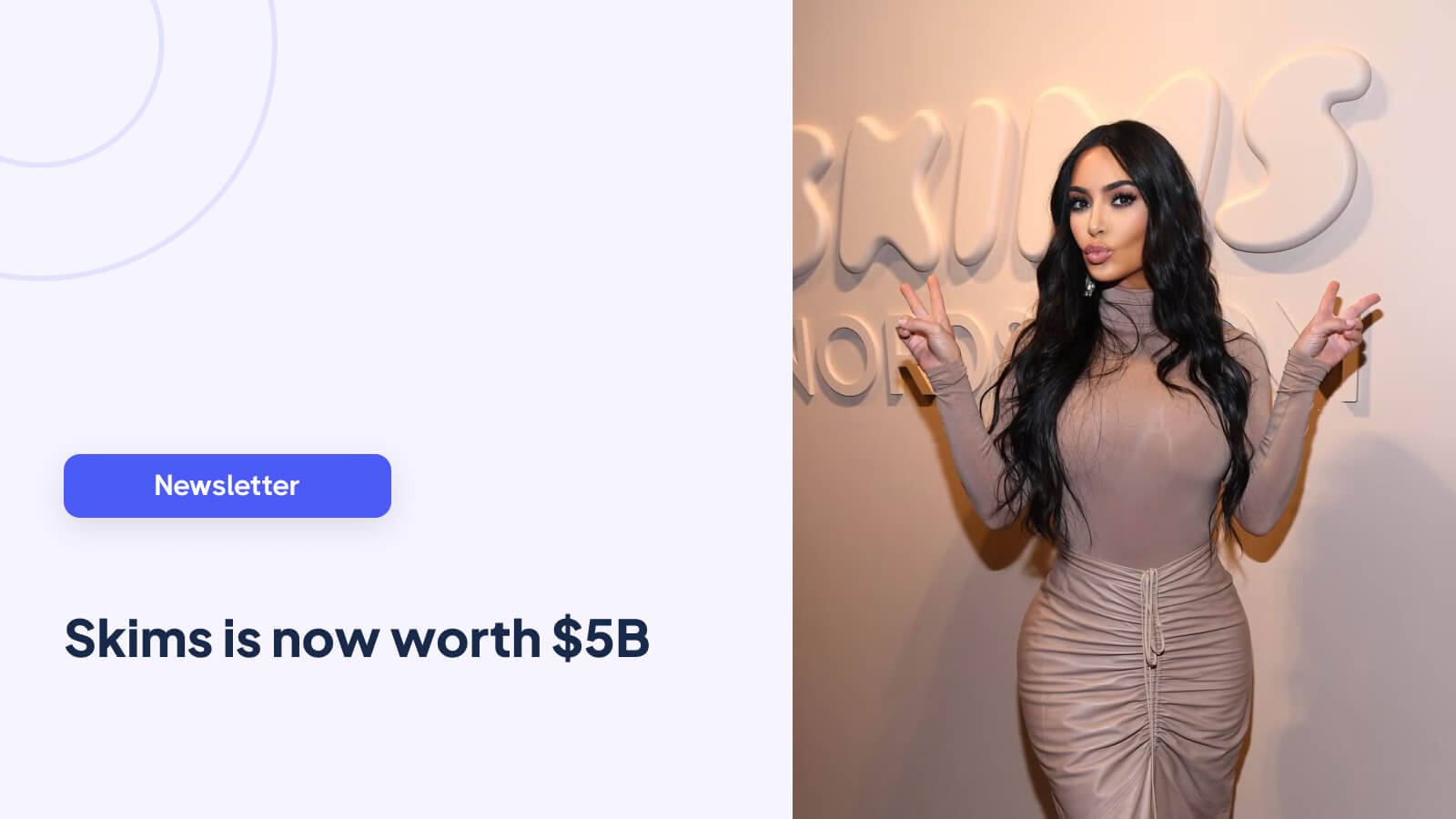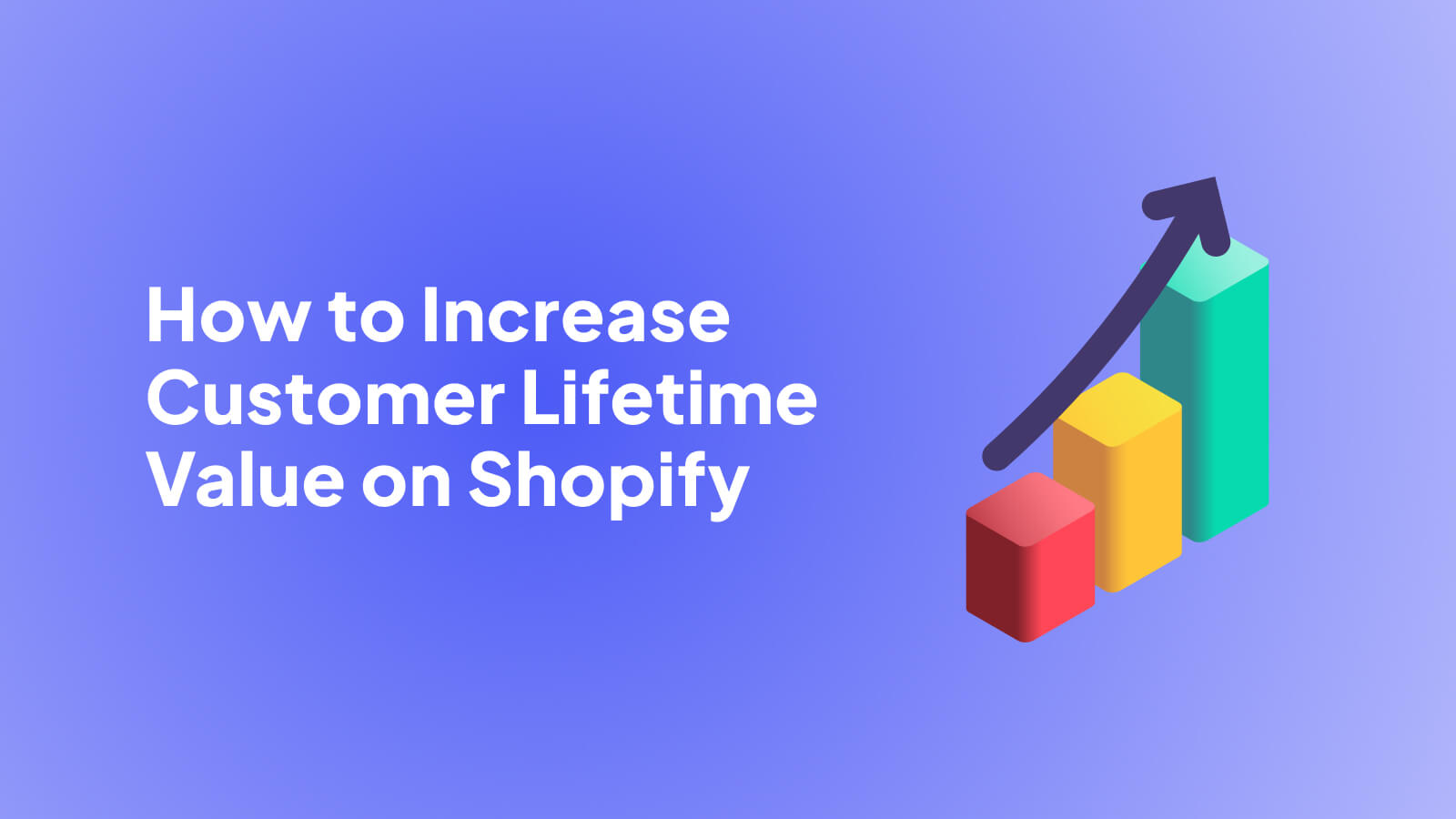
If you're a Shopify merchant, you know the grind of trying to find new customers. It's expensive, time-consuming, and honestly, a bit of a treadmill. What if I told you the biggest opportunity for growth isn't out there somewhere, but right in your existing customer list?
It all comes down to shifting your perspective. Stop thinking about one-off transactions and start focusing on building lasting relationships. When you nurture the customers you already have, you're not just improving their experience—you're directly boosting your bottom line through repeat purchases.
Why Customer Lifetime Value Is Your Most Important Metric
Let's be real. Chasing new customers is a tough game. We all get caught up in tracking traffic and conversion rates, but the one metric that truly signals a healthy, sustainable Shopify store is Customer Lifetime Value (CLV). This isn't just a buzzword; it’s the total amount of money you can expect a customer to spend with you over their entire relationship with your brand.
Focusing on CLV is a game-changer. Why? Because the cost to land a new customer has gone through the roof. Building a profitable business on single-purchase customers is harder than ever. This is where retention really shines. The research is pretty clear on this: a small 5% bump in customer retention can increase your profitability by a massive 25% to 95%.
It's simple math. It costs far less to keep a happy customer than to find a new one, especially when you consider that acquisition costs have shot up by 222% recently. For a deeper dive, you can check out these proven strategies to increase customer lifetime value.
Shift from Acquisition to Retention
Ever hear of the 80/20 rule? It absolutely applies to ecommerce. A huge chunk of your future sales—often around 80%—will come from just 20% of your current customers. These are your champions, the people who come back time and again. Pouring your energy into this group is the most reliable way to scale your business.
A lot of merchants talk about CLV, but few actually put in the work to master it. This is your chance to get a serious edge over the competition. It means ditching the frantic, "acquire-at-all-costs" mindset for a much smarter, more profitable focus on building real relationships.
The core idea is simple but profound: by making your existing customers happier and more engaged, they will not only buy more frequently but also become advocates for your brand, driving word-of-mouth referrals that lower your acquisition costs over time.
This isn't just about spamming your email list or throwing out random discounts. It's a fundamental shift in how you operate. Every decision you make should be seen through the lens of a few simple questions:
- Does this make the customer's experience better?
- Will this inspire them to buy from us again?
- How can we show this customer we genuinely value them?
When you start answering these questions with your actions, you'll see your CLV climb, leading to a much healthier and more resilient business.
Calculating Your Store's Customer Lifetime Value
You can't fix what you don't measure. Before you can start boosting your customer lifetime value, you need to know where you stand right now. Calculating this number for your Shopify store is more than just a math exercise; it’s about getting the clarity you need to make smarter, more profitable decisions about marketing and customer retention.
It all boils down to three core metrics. I like to think of them as the DNA of your customer relationships—the building blocks that determine long-term profitability.
The Three Pillars of CLV
First up is your Average Purchase Value (APV). This one's straightforward: take your total revenue over a set period and divide it by the number of orders you received. This tells you, on average, how much a customer spends each time they check out.
Next, you'll want to figure out your Purchase Frequency (PF). How often do your customers come back for more? To get this number, just divide the total number of orders by the number of unique customers within that same timeframe. A high purchase frequency is a fantastic sign of a loyal, engaged customer base.
Finally, there’s the Average Customer Lifespan (ACL). This is your best estimate of how long someone will continue to buy from you before they go quiet. It can be a bit tricky for newer stores, but looking at your data over a one to three-year period is a solid place to start.
This image really helps visualize how these three elements come together.
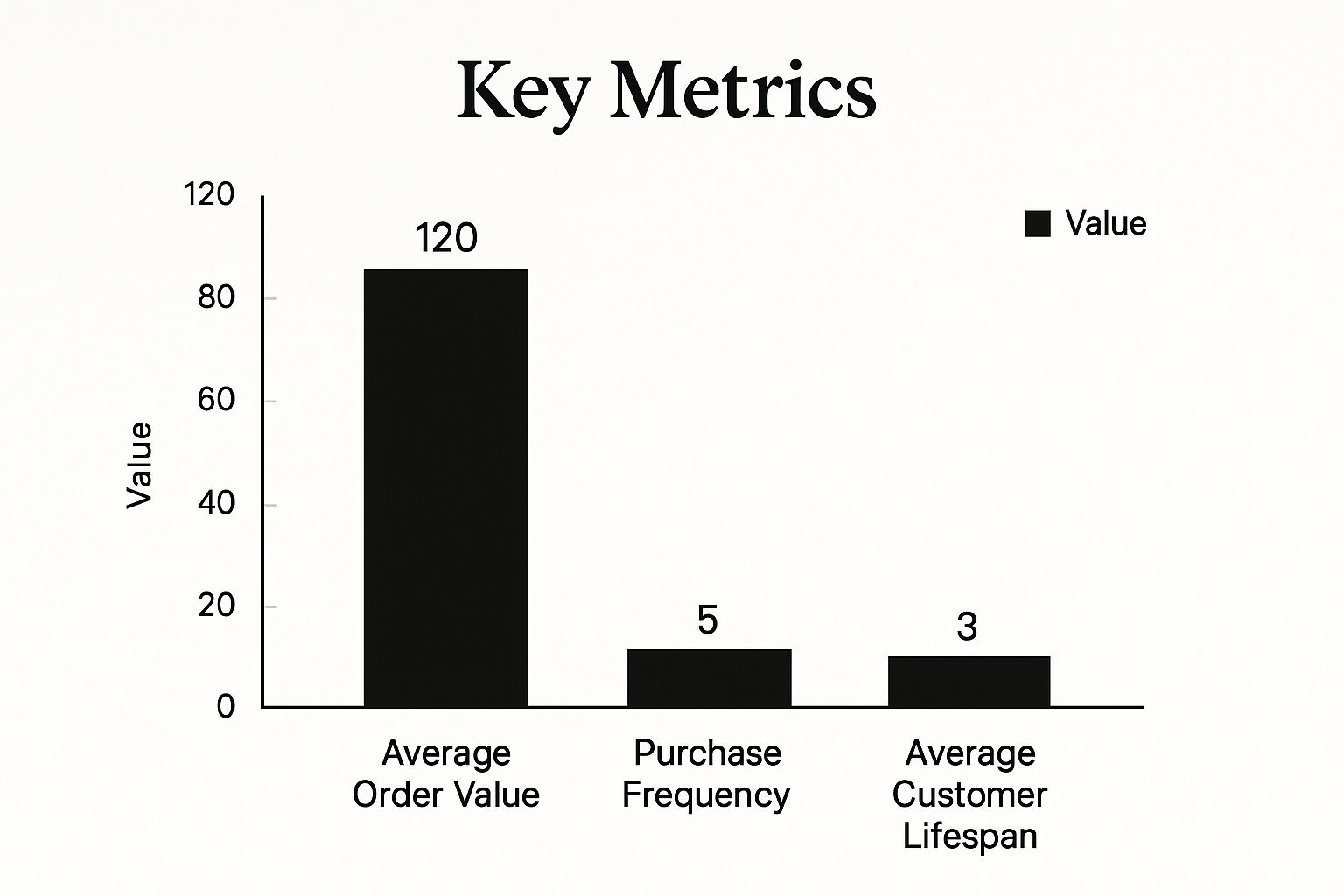
As you can see, even what might seem like small numbers in each category can stack up to create a really healthy lifetime value.
Putting the Formula into Practice
Once you have these three figures, the actual calculation is simple. The standard CLV formula is: (Average Purchase Value × Purchase Frequency) × Average Customer Lifespan.
Let's run through a quick example. If your average sale is $50, and customers typically buy three times a year for about two years, your CLV is $300 ($50 x 3 x 2).
Suddenly, you have a powerful tool for segmenting your audience. You can treat your VIPs differently from one-time buyers because you know their long-term worth. If you want to dive deeper into the strategic side of this, I highly recommend checking out Shopify's detailed guide on customer lifetime value.
Knowing your CLV moves you from guesswork to data-driven action. It answers a crucial question: "How much can I afford to spend to acquire a new customer and still remain profitable?"
This number is your new north star. It informs your ad budgets, justifies spending on top-notch customer support, and helps you design loyalty programs that actually pay for themselves.
The real magic, however, isn't just knowing the number. It's understanding how small, incremental improvements in each of these areas can have a massive impact on your bottom line.
The table below shows exactly what I mean.
Impact of Small Improvements on CLV

This table illustrates how minor boosts in key metrics can significantly increase overall Customer Lifetime Value, highlighting the power of incremental changes.
MetricBaseline ScenarioImproved ScenarioImpact on CLVAverage Purchase Value$75$85 (+13%)Significant IncreasePurchase Frequency (per year)2.53.0 (+20%)Major BoostCustomer Lifespan (years)22.5 (+25%)Exponential Growth
See how that works? You don't need a single home-run strategy. Focusing on small, consistent wins that nudge each of these metrics upward is the most sustainable path to growing your Shopify store.
Elevate Your Customer Experience to Boost CLV
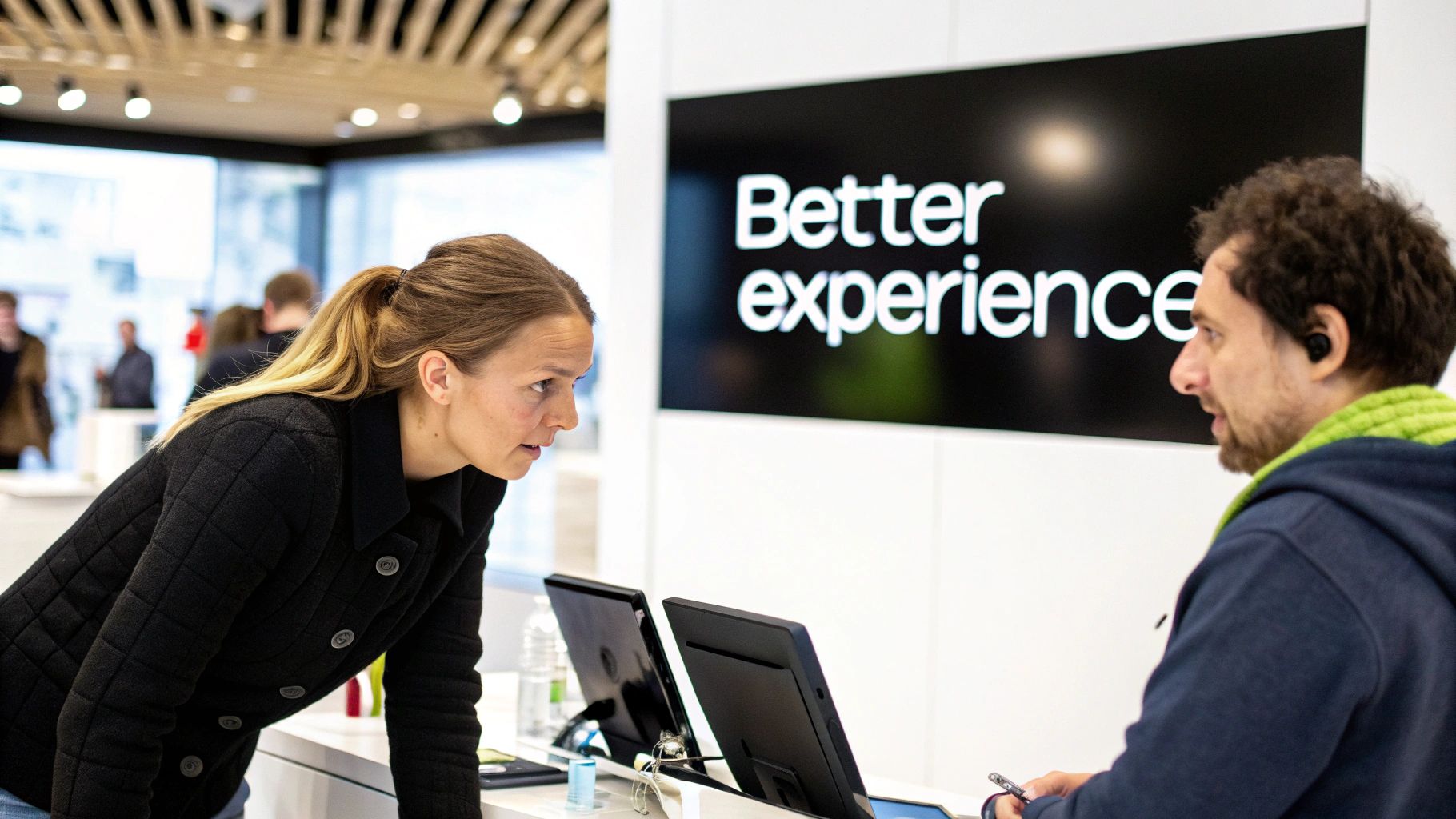
A stellar customer experience is the real secret sauce for a high CLV. It’s all about making your customers feel seen and appreciated long after that first purchase. This is where you shift a one-off transaction into a genuine, long-term relationship.
We have to get past surface-level personalization. An email that just plugs in their first name simply doesn't cut it anymore. Real personalization digs into their actual purchase history to offer something genuinely useful, which builds trust and gets them excited to shop with you again.
Think about it this way: if a customer buys a specific dark roast coffee, your follow-up shouldn't be a generic 10% off coupon. Instead, send them a note about a new, similar roast you just got in, or maybe suggest a French press that would pair perfectly. That shows you're paying attention.
Master the Post-Purchase Journey
So much focus goes into getting the sale, but the moments right after a customer clicks "buy" are often a missed opportunity. This post-purchase phase is where you can either create a loyal fan or lose a customer for good.
You have the power to turn what is often a period of buyer's remorse or shipping anxiety into an experience that builds confidence and delight. The key is to get ahead of the common friction points.
Here’s where to focus:
- Proactive Shipping Updates: Nothing creates anxiety like radio silence. Don't make customers hunt for a tracking number. Set up automated emails or texts to let them know when their order is packed, shipped, and out for delivery. Keep them in the loop!
- Hassle-Free Returns: A clunky or expensive return process is a relationship killer. Make your policy crystal clear and dead simple. Including a pre-paid return label can flip a potentially negative experience into a reason they trust you more.
- Responsive, Human Service: When things go wrong—and they sometimes will—a fast, empathetic response from a real person can save the day. Empower your support team to solve problems, not just follow a script. A once-frustrated shopper can quickly become your biggest advocate.
A recent study found that 82.5% of customers are more likely to buy from a brand again if they feel understood and cared for. This is a direct line from great service to a higher CLV.
Nailing these touchpoints means you truly get what makes a great shopping journey. To dig deeper into this, check out these ecommerce user experience best practices. Every positive interaction reinforces their decision to choose you, making them far more likely to come back for more.
Drive Repeat Purchases with Modern Loyalty Tactics
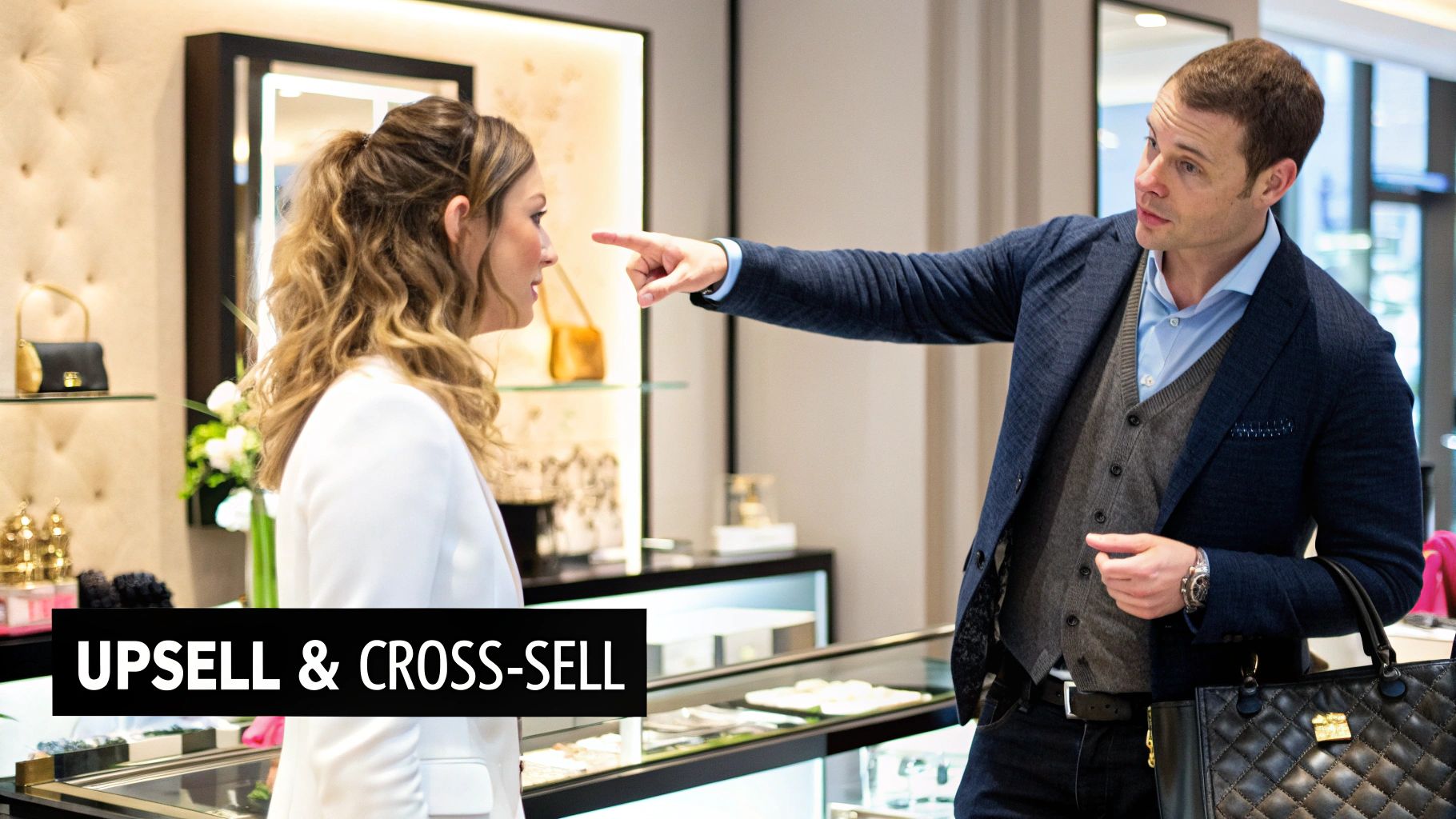
A great customer experience is the foundation, but it's the modern, savvy tactics that actually bring customers back for a second, third, and fourth purchase. If you're still thinking in terms of "buy 10, get one free" punch cards, it's time for an upgrade. We need strategies that genuinely engage and motivate your Shopify customers.
The best approach I've seen combines smart loyalty programs with content that effortlessly bridges the gap between seeing a product and buying it. It’s all about making customers feel genuinely appreciated for sticking with you and then making it ridiculously easy for them to shop again.
Design a Smarter Loyalty Program
A loyalty program that actually works isn't just a discount machine. It should make your best customers feel like valued insiders. The real goal is to build a system that encourages repeat buys without just tanking your profit margins.
Think about creating a tiered system. As customers spend more, the rewards get better. A new shopper might earn basic points, but a VIP who has spent over $500 could unlock exclusive perks. Imagine offering them early access to new collections or free shipping on every single order. That creates a real, tangible reason to keep coming back and climb that loyalty ladder.
But don't stop at just rewarding transactions. You can forge a much stronger bond by giving out points for things other than spending money:
- Writing a product review: This is invaluable social proof for new visitors.
- Sharing your brand on social media: Free marketing that expands your organic reach.
- Referring a friend: This brings in a new, high-intent customer who already trusts you.
For instance, a skincare brand could offer 50 points for leaving a review and a cool 100 points when a referred friend makes their first purchase. These actions make the customer feel more invested in your brand community, which makes them far less likely to shop elsewhere.
I’ve seen it time and again: 80% of companies with a loyalty program report a positive ROI. The secret sauce is rewarding engagement, not just spending. That's how you build a relationship that lasts.
Turn Your Content into a Shopping Channel
Alongside a solid loyalty program, you absolutely have to cut down the friction between a customer seeing something they like and actually buying it. This is where shoppable content, especially video, becomes your secret weapon for boosting CLV.
Picture this: a customer is watching one of your Instagram Reels or a how-to video on your website. They see a product they love. Instead of having to pause, navigate away, search your store, and find the item, they can just tap the product right there in the video and add it to their cart.
This is exactly what tools like Moast do for Shopify stores. By making your videos interactive and clickable, you turn passive viewers into active shoppers. It’s a game-changer. You're not just smoothing the path to another sale; you're also boosting engagement and often increasing the average order value in the process. For a deeper dive, check out these other tactics to increase your Shopify sales.
When you combine a compelling loyalty program with seamless, shoppable content, you create a powerful engine for repeat business. You’re no longer just hoping customers return—you’re actively giving them rewarding and incredibly easy reasons to do so.
Use AI to Predict and Personalize Customer Value

If you're serious about maximizing customer lifetime value, it's time to look beyond just past performance. That's where Artificial Intelligence (AI) comes in, completely changing the game for how we understand and connect with our customers.
Traditional methods like RFM (Recency, Frequency, Monetary) analysis are great for giving you a snapshot of what’s already happened. But they’re not so great at telling you what a customer is going to do next. AI models, on the other hand, can digest a massive amount of real-time data—everything from browsing patterns and abandoned carts to email opens and social media interactions.
This deeper level of analysis leads to far more accurate CLV predictions. AI doesn't just see a purchase; it recognizes the subtle behaviors that led to it and can forecast future value with incredible precision. Think of it as the difference between driving while looking in the rearview mirror versus using a GPS that sees traffic jams before you hit them.
Proactively Identify and Retain At-Risk Customers
One of the most powerful things you can do with AI is spot customers who are at risk of churning before they're gone for good. By tracking subtle changes in their behavior—like visiting your store less often, ignoring your emails, or taking longer between purchases—AI can assign a "churn risk" score to each person.
This is a complete game-changer. Instead of realizing a customer hasn't bought anything in six months, you get an early warning signal. This allows you to jump in and take proactive steps to win them back.
For instance, an AI tool might flag a once-loyal customer who hasn't bought in 60 days and has stopped opening your campaigns. You can immediately trigger a personalized "we miss you" email with a compelling offer or a quick survey to see what's changed. Intervening like this is infinitely more effective than trying to win back someone who has already moved on.
We all know it's 5 to 25 times more expensive to acquire a new customer than to keep an existing one. AI gives you the predictive power to see what your customers need ahead of time and launch retention efforts that actually work, making it an essential tool for boosting profitability.
Achieve Hyper-Personalization at Scale
Real personalization is so much more than just dropping {{first_name}} into an email. It’s about creating a unique, genuinely relevant experience for every single person, every single time they interact with your brand. Trying to do this manually is an impossible task, but AI makes it a reality.
AI-powered tools are the key to hyper-personalization, allowing you to dynamically adjust content, product recommendations, and offers based on a customer's entire history and what they're doing on your site right now.
- Smarter Product Recommendations: Forget showing generic "best-sellers." AI can suggest items that perfectly complement a customer’s previous purchases and browsing habits.
- Personalized Content Delivery: Imagine showing a first-time visitor your top-rated products, while a VIP customer sees an exclusive preview of a new collection. You can get started by learning how to implement shoppable UGC on your store.
- Optimized Communication: AI can even figure out the best time and channel to reach out to each customer—whether that's an email at 7 PM on a Tuesday or an SMS on Saturday morning—to maximize your chances of engagement.
By putting AI to work, you're moving from reactive guesswork to proactive, data-driven strategies. This is how you build the deep-seated loyalty that sends your CLV through the roof.
Common Questions About Customer Lifetime Value
Even after you've mapped out a solid plan, you're bound to have some questions as you start digging into customer lifetime value. It's completely normal. Getting these sorted out is what separates the merchants who get stuck from those who confidently move forward.
Let's break down a few of the most common questions we hear from Shopify store owners just like you.
What Is a Good Customer Lifetime Value?
This is the big one, and the honest answer is always: it depends. What's "good" for a store selling handmade jewelry will be wildly different from one selling high-end electronics. A good CLV is all about its relationship to your customer acquisition cost (CAC).
The classic rule of thumb is to aim for a CLV-to-CAC ratio of at least 3:1. This is the sweet spot. It means for every dollar you spend to bring in a new customer, you get three dollars back over the course of their relationship with you.
If your ratio is hovering around 1:1, you're basically on a hamster wheel—spending money just to break even on each customer. That's not a path to growth. A ratio below that means you're actively losing money. Seeing a low number here is your cue to revisit the strategies we’ve talked about to either boost that lifetime value or get smarter about lowering your acquisition costs.
How Long Does It Take to See an Increase in CLV?
I wish I could say it's instant, but building real value takes time. Patience is your best friend here. While some tactics can give you a quick win, a significant, store-wide increase in CLV is a long game.
For example, you can implement some smart upselling and cross-selling recommendations and see an immediate lift in your Average Order Value (AOV). That’s a great start! But the more profound strategies, like building a vibrant community or a tiered loyalty program, need time to marinate and build momentum.
Realistically, you should start seeing positive changes in metrics like purchase frequency within 3-6 months of consistent effort. The true, compounded impact on your store’s total CLV? That becomes much clearer over a 12 to 18-month horizon as customer relationships deepen and repeat buying becomes a habit.
Can I Increase CLV Without Offering Discounts?
Absolutely. In fact, you should. Leaning too heavily on discounts can be a dangerous game. You risk training your customers to only buy during a sale, which slowly chips away at your profit margins and the perceived value of your products.
The most loyal customers aren't built on transactional relationships; they're forged through exceptional value and a strong brand connection.
Instead of just slashing prices, focus on adding value. Non-monetary incentives are what build a "stickiness" that a simple 10% off coupon can never match.
Here are a few powerful ideas that don't involve a single discount code:
- Exclusive Content: Give customers access to special guides, tutorials, or behind-the-scenes content that no one else gets.
- Early Access: Let your loyal fans be the first to shop new collections before they're released to the general public. It's a powerful status symbol.
- Community Hub: Create a private Facebook group or Discord server where your customers can connect with your team and, more importantly, each other.
- Legendary Service: Turn a customer support issue into a loyalty-building moment. A little extra care here goes a very long way.
- Simple Recognition: A handwritten thank you note or a social media shoutout can have a massive impact. This is where you can unlock the power of customer testimonials by celebrating your biggest fans and building powerful social proof at the same time.
Related content
Turn your videos into sales
Boost conversions by up to 30% by turning your existing TikToks and Reels into shoppable videos directly on your Shopify store.




.jpg)

